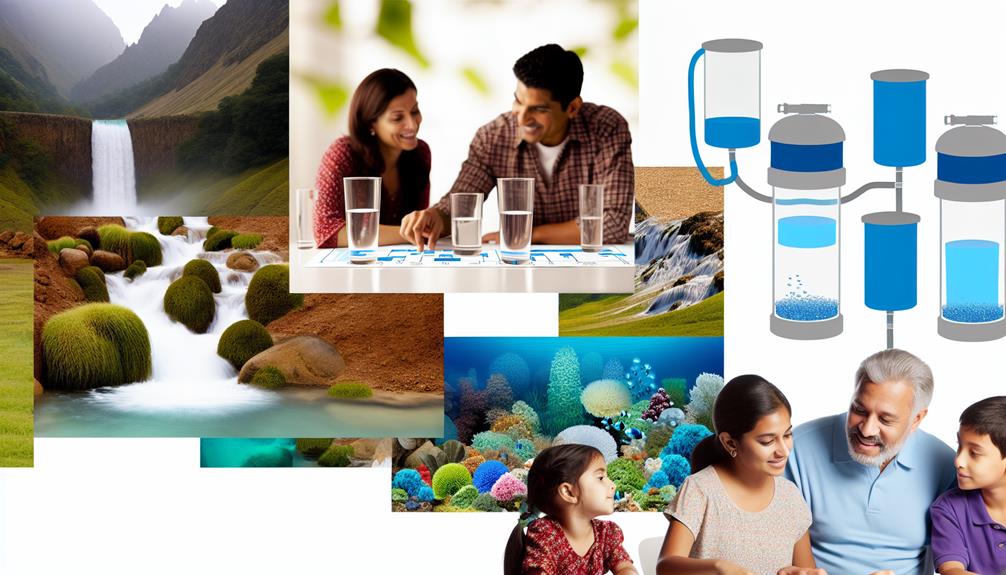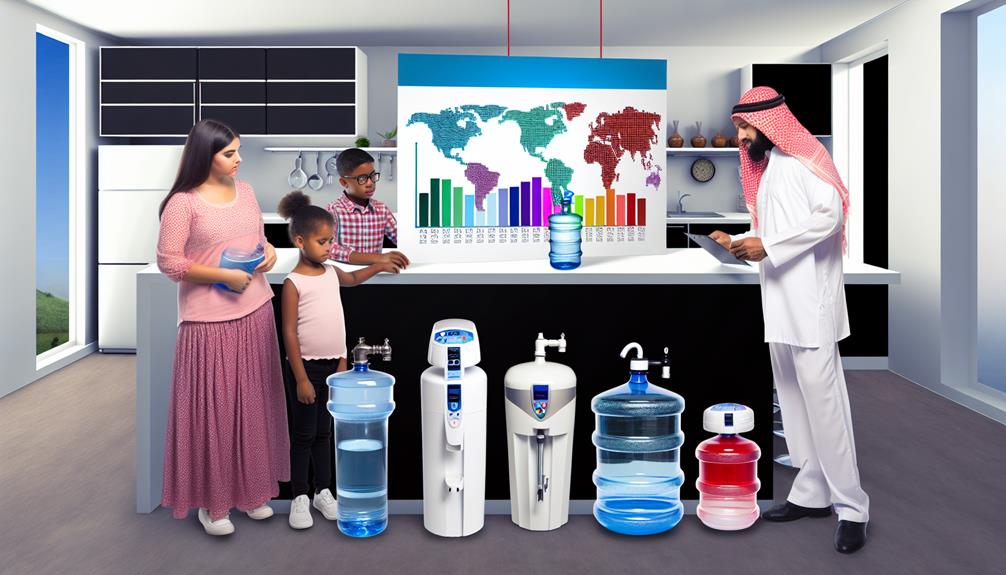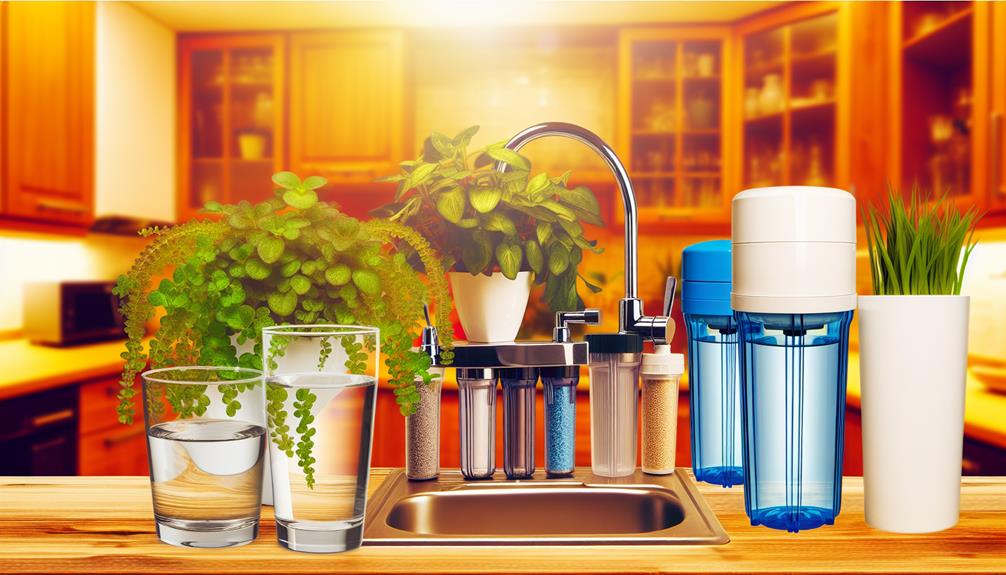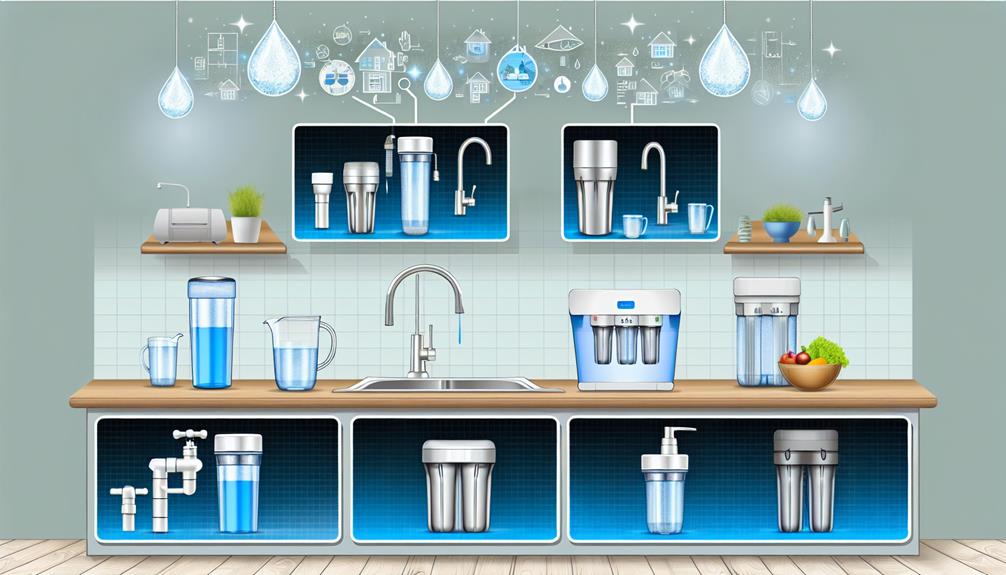Did you know that approximately 785 million people globally lack access to clean drinking water? As you consider joining the multitude safeguarding their health with a home water purifier, you're faced with a market brimming with options.
It's essential to understand your specific filtration needs before making a decision; not all purifiers are created equal, and what works for one household may not suit another. You'll want to compare the various technologies—do you go for a reverse osmosis system or is an ultraviolet filter best for your situation?
Consider the capacity you'll require to meet your daily water consumption without overburdening your system. And don't overlook the long-term commitment; researching maintenance demands will save you from unexpected hassles and costs down the line.
With the right guidance, you'll find a purifier that fits seamlessly into your life, ensuring every sip you take is as pure as it should be. Join us as we explore the key considerations that will lead you to make an informed choice, ensuring the water flowing from your taps is clean, safe, and refreshing.
Understand Filtration Needs

Before investing in a water purifier, it's crucial to analyze the specific contaminants present in your water supply to determine the most effective filtration technology for your needs. Understanding the contaminant levels isn't merely about ensuring palatability but also about safeguarding against waterborne diseases. Your task is to conduct a detailed water quality analysis, either through a certified laboratory or using reliable at-home testing kits.
Once you've obtained the data on contaminant levels, you need to decipher the results with precision. The presence of pathogens, heavy metals, or organic and inorganic compounds necessitates different filtration strategies. For example, if bacteria and viruses, culprits behind many waterborne diseases, are detected, you'll require a purifier with a microfiltration or ultraviolet system. Conversely, for high levels of metals like lead or arsenic, a reverse osmosis system or an ion exchange purifier would be more suitable.
Bear in mind that some filters specialize in removing certain contaminants while merely reducing others. It's imperative that you match the filter's capabilities with the specific impurities in your water. This analytical approach ensures that the water purifier you choose not only improves taste but also, and more importantly, reduces health risks associated with contaminated water.
Compare Technology Types
How do the various water purification technologies stack up against each other in terms of contaminant removal efficiency and cost-effectiveness? When you scrutinize the landscape of water purification, you'll find that reverse osmosis (RO) systems offer superior contaminant removal, especially for dissolved solids, but come with a higher initial investment and typically shorter filter lifespan. The semi-permeable membrane in RO systems is adept at reducing a broad spectrum of contaminants, including heavy metals and certain microorganisms.
Activated carbon filters, on the other hand, are cost-effective and excel at removing chlorine and improving taste and odor. They've a longer filter lifespan than RO systems but are less effective against hard-to-remove contaminants like fluoride and nitrates.
Ultraviolet (UV) purification technology is highly effective at disinfecting water by neutralizing bacteria and viruses. However, it doesn't remove physical contaminants and is often used in conjunction with other filtration technologies.
Ceramic filters provide a cost-efficient option with a long filter lifespan and are good at eliminating bacteria and sediments, but they may not reduce chemical pollutants as effectively.
Ion exchange units, typically used in water softeners, are excellent for removing minerals such as calcium and magnesium but aren't comprehensive solutions for all contaminant removal needs.
To make an informed decision, weigh each technology's strengths against your specific filtration requirements and maintenance capacity.
Evaluate Purifier Capacity

Having compared the various technologies for water purification, it's crucial to consider the capacity of purifiers to ensure they meet your daily water consumption needs effectively. The capacity of a water purifier isn't solely about the volume of water it can hold or filter at a time, but also about its efficacy over different contaminant levels and water hardness.
Consider these critical aspects when evaluating purifier capacity:
- Daily Usage Requirements: Assess the average daily water usage of your household. Capacity should align with consumption to avoid frequent refilling or overworking the system.
- Peak Flow Rate: Analyze the purifier's maximum flow rate, which indicates how quickly it can deliver purified water. During times of high demand, a higher flow rate ensures continuous supply.
- Filter Longevity: Understand the lifespan of the purifier's filters in relation to water hardness. Harder water can reduce filter efficiency, necessitating a system with a larger capacity or more robust filters.
- Contaminant Removal Efficacy: Ensure the purifier maintains performance over time, especially with high contaminant levels. The capacity should reflect the ability to purify water without frequent filter changes or drops in purification quality.
Selecting a water purifier with the appropriate capacity is paramount for consistent performance and longevity of the system. Remember, an undersized unit may lead to inadequate water supply, while an oversized one could incur unnecessary costs.
Research Maintenance Demands
When selecting a water purifier, it's essential to scrutinize the system's maintenance requirements, including frequency of filter replacements and cleaning needs, to ensure long-term reliability and cost-efficiency. You'll want to consider the cost implications of regular maintenance to avoid unforeseen expenses.
Maintenance for water purifiers can vary significantly, with some systems needing frequent filter changes and others boasting long-life filters. Decipher the manufacturer's guidelines to understand the expected lifespan of filters and the associated costs. It's not just about the initial purchase; the total cost of ownership includes these ongoing expenses.
Warranty options also play a pivotal role in maintenance demands. A comprehensive warranty can mitigate maintenance costs, but you must understand what is covered and for how long. Be analytical about the warranty terms to ensure they align with the system's maintenance schedule.
Here's a quick reference table to guide you:
| Maintenance Aspect | Consideration Details |
|---|---|
| Filter Replacement | Frequency and cost of filters |
| System Cleaning | Procedures and regularity |
| Warranty | Coverage extent and duration |
Conclusion
In conclusion, carefully assess your water quality to determine your filtration requirements.
Choose the right technology, whether it's RO, UV, or a combination, to effectively remove contaminants.
Consider your household's water consumption to select an appropriate capacity.
Lastly, don't overlook the maintenance demands; a purifier with accessible parts and clear service guidelines will ensure long-term reliability and performance.
Make an informed decision to enjoy safe, clean water every day.

